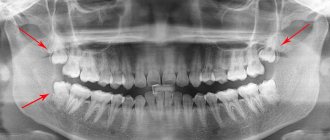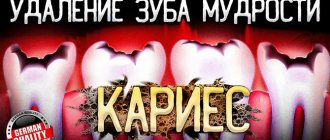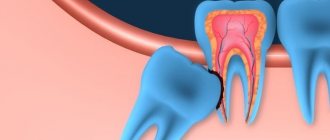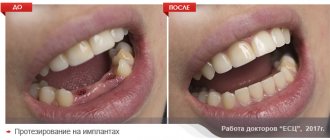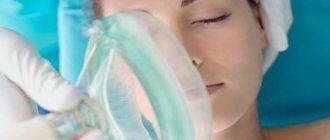For many years, dental treatment was accompanied by pain or discomfort. All this contributed to the development of a great fear of going to the dental office. People have become so afraid of doctors that they are ready to risk their health by testing dubious traditional methods on themselves just to avoid going to an appointment.
Pain and discomfort can be completely eliminated with the help of anesthesia; it is usually used when pain cannot be tolerated. But the injection or drip itself is not very pleasant, and it takes a long time to recover from anesthesia.
Therefore, local anesthesia has become the most common method of relieving pain during a session. The method of pain relief and the drug itself are constantly being improved, and this allows dentists to keep control over the patient’s sensation and condition and select an effective remedy individually for each person.
What determines the level of pain during dental treatment?
If the word “treatment” means not only the common procedure of filling teeth, then not all doctor’s manipulations in the oral cavity cause pain. For example, here is a list of completely painless procedures:
- Treatment of shallow caries.
- Whitening tooth enamel.
- Professional teeth cleaning with AirFlow.
- Deep fluoridation of teeth.
- Fissure sealing.
Most of the above procedures are preventive. Thus, it becomes clear that if you visit the dentist solely to prevent disease, there will be no need for painful procedures.
In other cases, the appearance and degree of pain will depend on the following factors:
- Individual sensitivity and pain threshold of the patient.
- The degree of tooth damage.
- The presence of inflammation, including purulent.
- Individual features of anatomy (location of the nerve ending close to the surface of the tooth, etc.).
- Susceptibility to anesthetic.
- Emotional mood before treatment.
Enamel is the least sensitive, but the more damaged it is, the more susceptible the tooth is to pain. Below the level of the gum, the neck of the tooth does not have enamel, it consists of “cement”; therefore, any dental manipulation in the lower part of the tooth will be accompanied by severe pain.
You should know that without anesthesia it is impossible to cure pulpitis in any form, since the area of its damage consists of nerve and vascular fibers.
Is it possible to have a painless injection?
Most patients, even when performing a simple filling, ask for an anesthetic injection to stop experiencing fear of sudden pain. But such an injection in itself is quite unpleasant. To reduce the pain from an injection, doctors use:
- Special carpule syringes with thin needles.
- Before the injection, the mucous part is dried with a dental hair dryer so that penetration is painless.
- The injection site is treated with anesthetic ointment or gel.
- The medicine is administered very slowly, so after the first dose is administered, the patient will not feel the second.
General anesthesia
There are times when the use of local anesthetic techniques is not suitable for a patient for a number of reasons. Then dental intervention is performed under anesthesia .
When using anesthesia, the patient is put into deep sleep, completely shutting off consciousness and pain sensitivity. Anesthesia is administered intravenously or by inhalation. It is rarely used in dental clinics, since administering anesthesia requires an anesthesiologist-resuscitator, as well as the availability of special equipment.
This pain relief method can be used to treat or remove teeth:
- in children under 5 years of age, since it is extremely difficult to carry out any manipulations in the child’s oral cavity;
- in adults due to severe fear of dental treatment, or due to an allergy to local anesthetics.
There are situations when the action of local injection anesthetics does not give the desired effect due to the patient’s increased psycho-emotional tension, or the person experiences panic fear before performing the procedures.
This problem can be solved using sedation . This method is suitable not only for patients who are afraid of performing dental procedures, but also afraid of the injections themselves. Unlike anesthesia, a person is fully conscious, can adequately respond to the doctor’s commands, and at the same time is in a state of relaxation and peace.
Types of anesthesia
Methods and painkillers differ significantly in the mechanism of action and the method of administration into the body. The following types of anesthesia are used in the field of therapeutic dentistry:
- Application – involves applying a special gel or spray based on an antiseptic. It is used at the site of an anesthetic injection, removal of dental plaque and when removing baby teeth.
- Infiltration - introducing a dose of anesthetic into the gum tissue by injection. With this injection, the nerve endings are completely blocked. The teeth and adjacent tissues completely lose their sensitivity. Under such anesthesia, it is possible to treat almost any dental disease and even perform minor operations.
- Conduction - this type of anesthesia involves delivering the drug directly to the branch of the trigeminal dental nerve, which blocks the transmission of impulses along the entire length of the nerve. This method is used in areas of dense bone formations of the lower jaw, because it is impossible to administer a direct injection into this area due to the insufficient width of the open mouth. The technique of performing conduction anesthesia is quite complex, and in itself can be painful, but it provides the longest and most lasting effect in the treatment of the lower and upper jaw.
Treatment
To answer the question whether it is painful or not to treat caries, you need to understand at what stage the disease is. Treatment at the initial stage consists of remineralizing the damaged area of tooth enamel, which naturally does not hurt at all. Even with slight destruction of the enamel, filling is required. At this stage, the procedure can be performed without the use of anesthesia if the patient is willing to endure a little discomfort during drilling of the dental cavity. Subsequent stages of the development of the carious process require thorough treatment, so it is no longer possible to do without anesthesia. A disease such as cervical caries occurs most often in children and people over 30 years of age who do not properly maintain oral hygiene. This kind of caries forms at the interface between the tooth and the gum. Cervical caries is accompanied by increased sensitivity of the tooth to thermal as well as mechanical stimuli. It is characterized by the formation of a small dark spot and the appearance of bad breath. Cervical caries develops very quickly and moves to the root of the tooth. Treatment of such a disease at the initial stage is carried out with the help of a course of therapy; in subsequent stages of the development of the disease, anesthesia, filling, and possibly tooth depulpation will be required. In order not to think about whether it is painful to treat caries, you should immediately contact a dentist if symptoms such as:
- discoloration of tooth enamel;
- the formation of light or dark spots on the tooth;
- the appearance of a tooth reaction to irritants;
- bad breath.
With timely assistance, treatment can be painless and may not require the administration of an anesthetic.
Treatment with laser
The laser has found its use in many industries, but it is especially popular in medicine. Initially, the laser was used for operations as a replacement for a surgical scalpel. Now modern clinics use it for dental treatment. The laser works completely painlessly, and is actively used in the treatment of canals and root cysts, gum problems, and diseases of the mucous membrane.
A typical laser therapy session looks like this:
- The dentist conducts a detailed scan of each tooth for caries, using a laser to identify even damaged areas on the tooth surface that are invisible to the eye.
- The identified problem areas are then treated, with the beam targeting only the caries-affected areas with surgical precision, providing antibacterial cleaning to healthy teeth to prevent accidental infection of a healthy tooth.
- Next, the tooth is washed, treated with an adhesive system and sealed with high quality cement mortar, the composition of which is similar to the composition of a real tooth.
Treatment of dental canals without pain is carried out according to a standard protocol, and a laser beam is used for thorough cleaning of the canals and their antiseptic treatment. Under the action of a dental laser, all liquid instantly evaporates, thus the canals are completely cleaned of pulp, bacteria and other inorganic particles that got on the tooth during the procedure.
Benefits of laser dental treatment:
- Complete absence of pain, discomfort and fear during treatment.
- There is no need to wait until the painkillers take effect.
- The laser treatment procedure is many times faster than treatment with the classical method.
- Gentle treatment of the tooth surface.
- Complete elimination of the possibility of secondary caries
- Prevention of bleeding during treatment in the gingival cavities.
- Complete cleaning of dental canals and no complications
Flaws:
- Only superficial and medium caries can be treated with laser
- High cost of treatment due to the high cost of equipment.
- Physicians must have appropriate qualifications in handling such a device.
“General” anesthesia and sedation
Dental treatment under sedation at “22 Century” Dentistry.
In our clinic you have a unique opportunity to solve all your dental problems in one day. Modern types of “general” anesthesia and sedation used in “22nd century” dentistry allow:
- Carry out most treatment procedures in one clinic visit;
- Reduce recovery time after the procedure (usually this takes no more than a day);
- Overcome the fear of visiting the dentist.
Many people think that anesthesia and sedation are expensive paid services that ordinary patients cannot afford. However, it is not! The cost of these procedures is only slightly higher than local anesthesia. You can see this for yourself in our “Price List”.
If you need to treat 1-2 teeth or you simply do not want to resort to anesthesia or sedation for some reason, there is a wonderful alternative - local anesthesia, for which new modern drugs are used in our dentistry. Let's talk about this pain relief method in more detail.
Is it possible to remove teeth under general anesthesia?
Tooth extraction under general anesthesia requires compliance with all the previously listed measures and is carried out taking into account all individual nuances. Contraindications are given the greatest attention. If there is an excess of possible risks over the expected benefits, the use of general anesthesia is replaced by other measures.
Types of anesthesia in dentistry Smile-at-Once
The Smile-at-Once clinic uses two types of general anesthesia:
- with preservation of consciousness: inhalation xenon sedation, as well as classical infiltration or conduction anesthesia,
- treatment during sleep: general anesthesia with the use of special drugs.
Svetlana Yurievna
“Before the operation, I asked the doctor how the amount of sedative was calculated so that it would be enough for the entire period of the operation. The doctor noted that he would look at my condition. To be honest, this scared me. Because I thought that at some point the sedative would end, it would hurt and I would feel it. But nothing like that happened, I turned my head - they put additional medicine in my IV, and everything ended well. I am immensely happy!”
- without fear and without pain
- peace of mind throughout the entire operation
- as safe as possible and even beneficial for the body
- under the full control of specialists
watch a video with the patient
Features of treatment under anesthesia
General anesthesia involves completely putting a person to sleep for 1-2 hours or even more: the anesthetic is administered intravenously or using inhalation equipment. A special feature of general anesthesia at the Smile-at-Once center is that it is carried out under the supervision of a certified team of anesthesiologists and resuscitators, and during the procedure, an ambulance is on duty near the clinic, which in case of complications will promptly deliver the patient to the nearest hospital for emergency medical care.
earlier
Now
Patient's opinion
“Until a week ago, I had no teeth at all on my lower jaw - and this caused very great inconvenience. I had implants done within a week and now I can chew and talk fully. Many thanks to the entire team for their attention and kindness, especially after anesthesia.”
watch a video with the patient
Features of treatment under sedation
If anesthesia is a complete immersion in sleep, then the use of sedation in dentistry allows the patient to remain conscious. For this purpose, the noble gas xenon is used, which has a powerful analgesic property and allows you to completely relieve pain during treatment, surgical procedures or simple diagnostic procedures. The patient understands and is aware of what is happening, but does not experience pain. Xenon in dentistry is an innovative and completely safe solution for those patients who are terrified of dental treatment or dental implantation, who cannot make up their mind, or for whom general anesthesia is strictly contraindicated for medical reasons.
Ultracain DS
The analgesic basis of the first two drugs is ARTICAINE (amide anesthetic from the thiophene series), an antispasmodic - lowers blood pressure. It is characterized by rapid action - anesthesia occurs in 0.5-3 minutes. Articaine is 2 times stronger than lidocaine and 6 times stronger than novocaine (anesthetics of previous generations), less toxic, relatively quickly eliminated from the body. Its half-life is, on average, 22 minutes, that is, all traces of the drug disintegrate in 44 minutes and are then completely eliminated from the body. Has high penetrating ability. It is distinguished by high purity of the solution. Allergic reactions to articaine are very rare - one in one hundred thousand injections ; the use of articaine, according to studies, is safe in 99.4% of cases. They also contain a vasoconstrictor (a substance that causes constriction of blood vessels and a decrease in blood flow in them) - adrenaline. The use of a vasoconstrictor continues and enhances anesthesia. The drug also contains antioxidants (sulfites) - substances that prevent the oxidation of adrenaline.
Ultracaine does NOT contain parabens (anesthetic preservatives), which significantly reduces its toxicity. In addition, parabens can cause allergic reactions.
Thus, ultracaine is:
- a strong anesthetic with moderately low toxicity, due to its components;
- the safest drug for pregnant women, because articaine does not penetrate the hematoplacental barrier - the barrier separating the blood of the fetus and the blood of the mother (Ultracaine DS).
School-age children can also use Ultracain DS. We always remember that the administration of an anesthetic solution with adrenaline is CONTRAINDICATED for children under 5 years of age, patients with pathologies of the cardiovascular system, with endocrine pathologies, taking antidepressants, thyroid hormones, drugs that block beta adrenergic receptors; - an anesthetic that practically does not require postoperative pain relief;
- a drug that provides a rapid onset of anesthesia, depending on the anesthesia tactics chosen by the doctor, the effect occurs within 30 seconds to 3-5 minutes);
The duration of anesthesia is, depending on the technique chosen by the doctor, from 1.5-2 hours to 5-6 hours. The choice of different techniques (infiltration, conduction anesthesia) depends on the planned dental procedure. For example, there is a difference between the treatment of caries of one tooth and the complex removal of a wisdom tooth. - good local and general tolerability. According to studies, only 4.3% of patients experienced toxic reactions, which was caused by the presence of adrenaline and sodium disulfate in the anesthetic solution.
- For standard procedures, a small amount of anesthetic is required (0.9 ml-1.8 ml).
I would like to note that for standard dental operations it is better to use Ultracain DS (adrenaline 1:200,000). A strong anesthetic provides high-quality anesthesia even during complex, long-term interventions, and a small amount of vasoconstrictor ensures low toxicity of the anesthetic solution. And we prefer to consider Ultracaine DS forte (adrenaline 1:100,000) as a “reserve anesthetic” in more complex situations:
- anesthesia of the lower lateral teeth (molars) for their treatment and depulpation;
- pain relief for inflammatory processes in the maxillofacial area (periostitis, osteomyelitis);
- for particularly traumatic interventions;
- in patients with a low pain threshold.
What treatment can be done under xenon sedation?
- dental treatment: removal of caries, treatment of root canals for pulpitis or periodontitis, removal of cysts and granulomas,
- any surgical operations,
- any treatment or prosthetics in case of panic among doctors,
- periodontal treatment within the framework of Smile Recovery complexes,
- dental implantation, both single and multiple – in this case, a higher concentration of the active substance is used, which allows for a more prolonged effect of the anesthetic, and also, if necessary, to put the patient into a medicated sleep.
